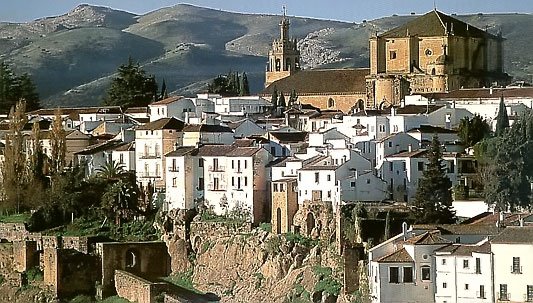 RONDA’S RICH HISTORY REVEALED
RONDA’S RICH HISTORY REVEALEDRonda has thousands and thousands of files on the history of the town and wider Spain that have until now been largely inaccessible to all. Indeed the existence of many of these documents was not even known to researchers or students of Ronda’s rich history.
Now thanks to a project carried out by the delegation of culture all these documents have been unearthed and catalogued then placed in the municipal archive that is housed at the Convento de Santo Domingo.
Some of the major finds dates back to the years of the re-conquest of Ronda from the Moors under the Reyes Católicos. One of the books shows the lands allocated to the nobles and horsemen who along with their armies liberated Ronda in 1485. There is a certificate dated 1547 for the bishop of Málaga showing that the town of Ronda was seeking singers for the Iglesia Mayor.
Other documents relate to the birth of Pedro Romero who is widely acknowledged as being the father of the modern bullfight and facing the bull on foot. It is dated 1818 and shows the parents and grandparents of the famed matador – a valuable record in the days before the present identity documents existed.
Pepa Becerra, the councillor in charge of the culture department, acknowledged “the laborious work of cataloguing and classification” undertaken by Clotilde Mozo and her team. The objective is now to make a digital record of all the unearthed documents.
A budget of almost 200,000 euros has been allocated to the major task of uncovering Ronda’s historic heritage that has lain till now hidden in files and vaults. The valuable records date back to the 1500s and some of the originals were kept in an old desk with three keys that was moved from the old courts to the Militia barracks then to the former town hall in the plaza de España before coming to rest in the Casa del Cultura then transferred to the municipal archive where they can be studied. Over those years they have survived fires and wars but miraculously remain intact.
BATH TIME
Next week a Nazari style garden will open at Ronda’s Baños Arabes. The baths date back to the14 th century and are the best preserved examples in Spain attracting 50,000 visitors a year. The area behind the baths has previously been closed to the public but nearly 300,000 euros has been spent on creating gardens in keeping with the era of the baths.
LIBRARY FURNITURE
The debate over the future of the building created to display traditional Ronda furniture is approaching its end. It was built at a cost of 1.2 million euros but has never been used. Now the council is united in a project to establish a scientific library for the use of local schools plus a public library and is set to seek government funding.
THIRD WAY
A third lane is being constructed in the calle Virgen de la Paz in Ronda by the Alameda to ease congestion by allowing vehicles to turn left without bringing the street to a halt. Some 4,500 vehicles use this busy road each day - once this lane is open and the roundabout in the plaza de España completed traffic flow should be greatly improved.
LOCAL CARE
A new health centre has been opened to serve the 650 people who live in the outlying areas of La Cimada and Los Prados in Ronda. The residents of the enclaves which are around 20 kms from Ronda have in the past used Arriate health centre. Ronda has spent 70,000 euros to refurbish the building and the health authority 9,000 euros on equipment.
SPORTY ARRIATE
The regional government through its employment creation programme has allocated 318,000 euros to be spent on the Arriate sports centre and covered swimming pool. The works will benefit seven residents who will be employed under the scheme. The provincial delegate for health María Antigua Escalera visited the centre with the mayor along with the health centre which has seen 10,000 euros of improvements.
HAPPY ANNIVERSARY
Unicaja is celebrating its 125 th anniversary based on one of its founding entities the Caja de Ahorros de Cádiz which was formed in 1884. Now Unicaja has established an open air exhibition in Ronda in the plaza Blas Infante by the bullring showing the banks illustrious history. It consists of information panels and displays and is currently being visited by local schools.

